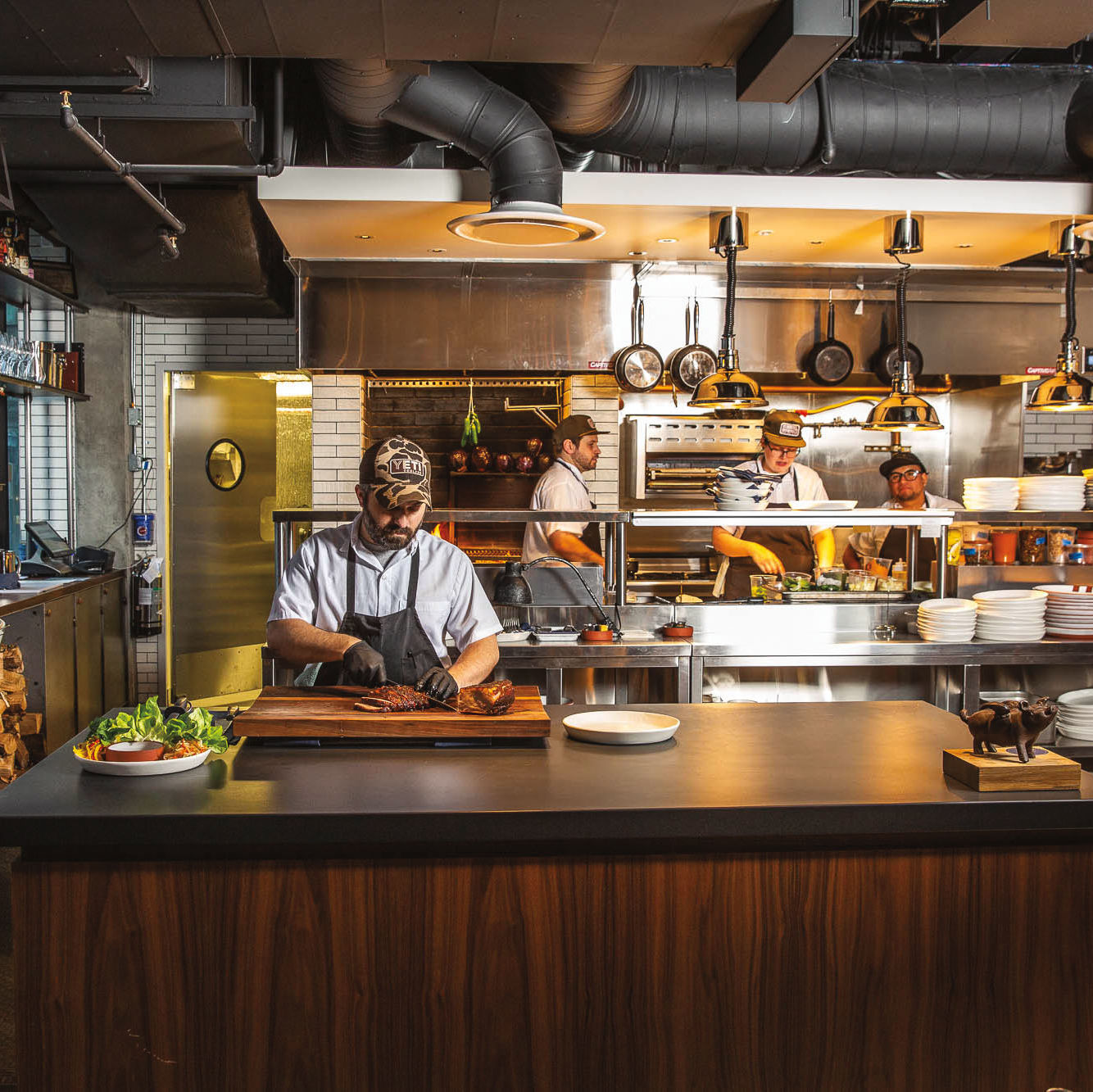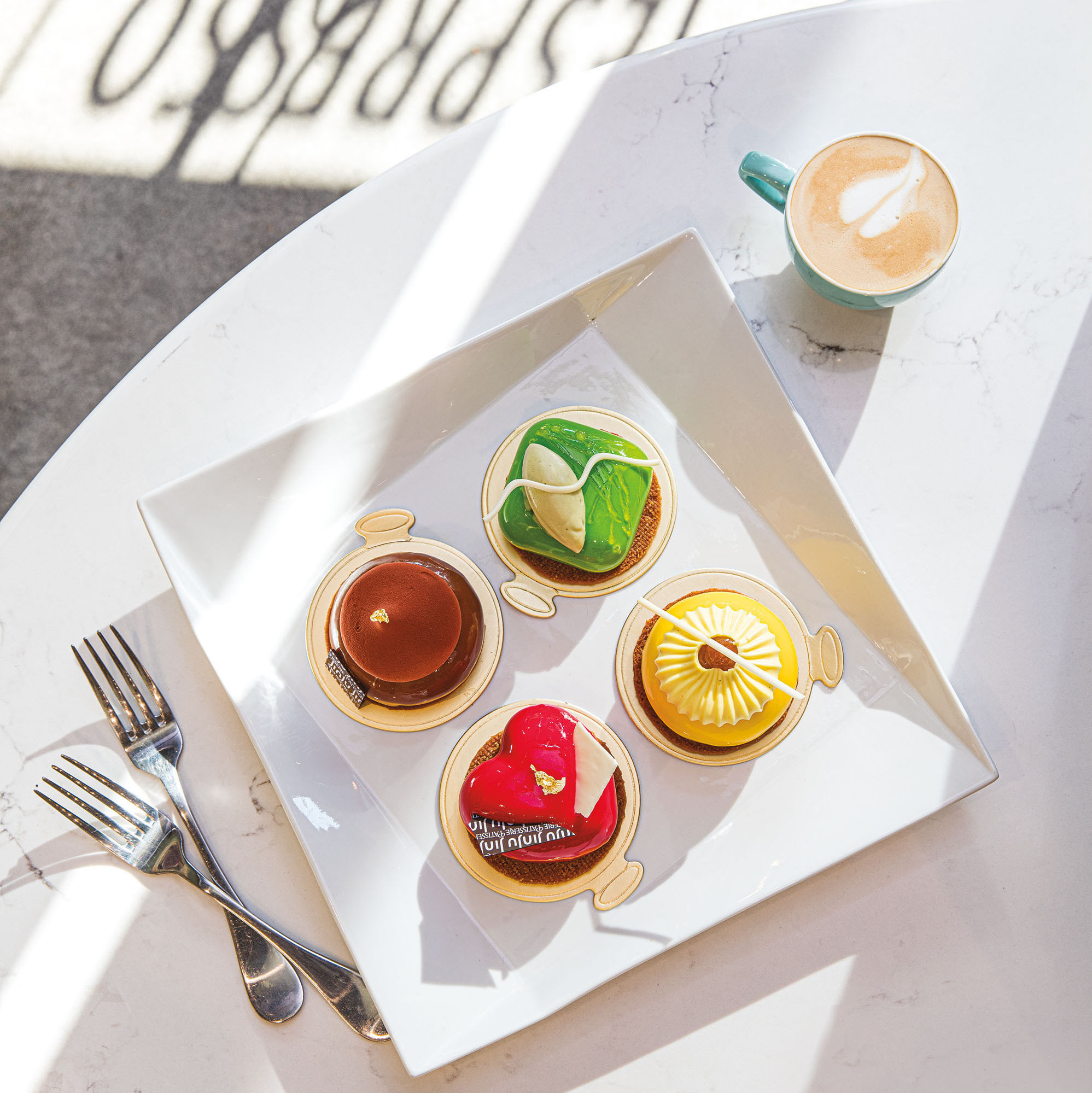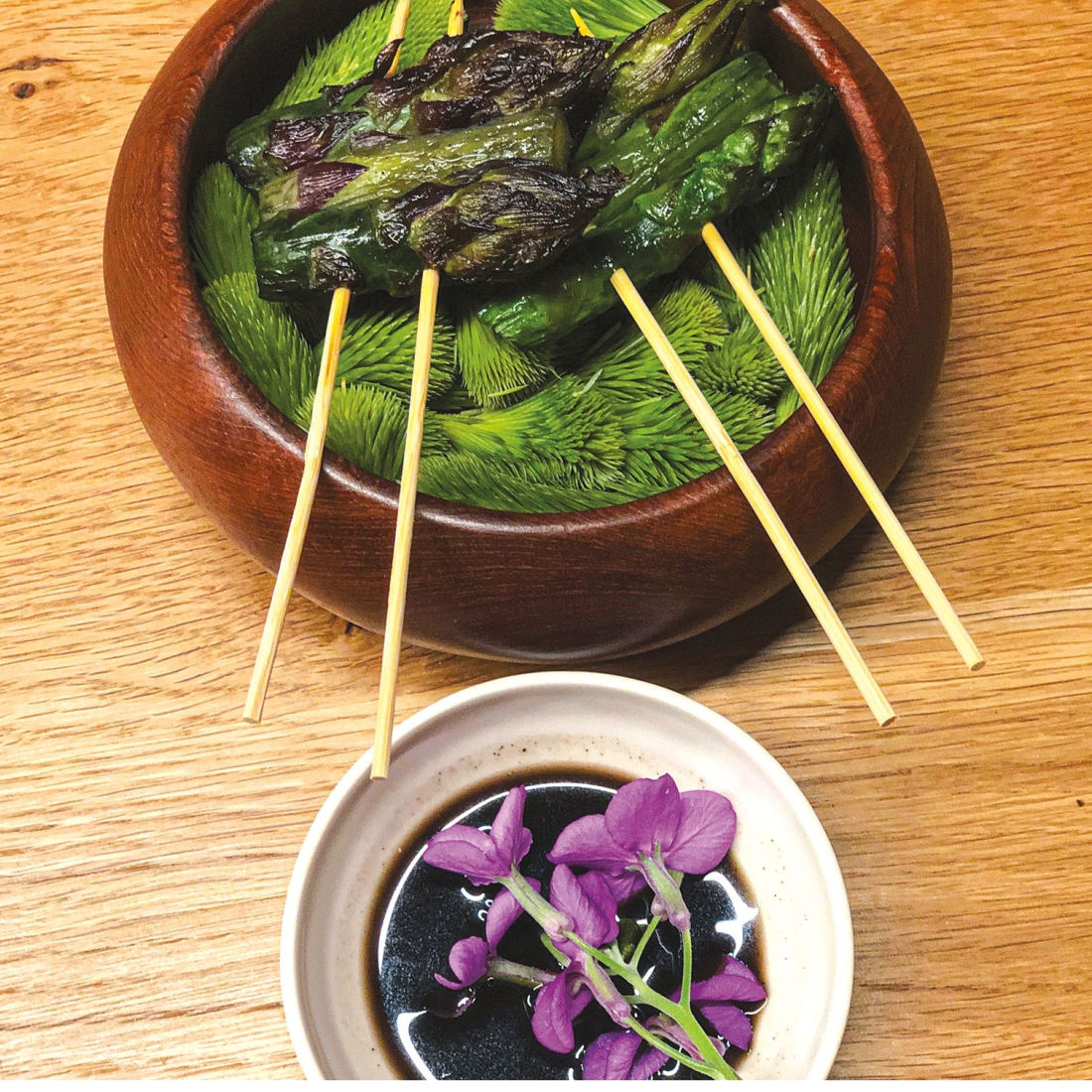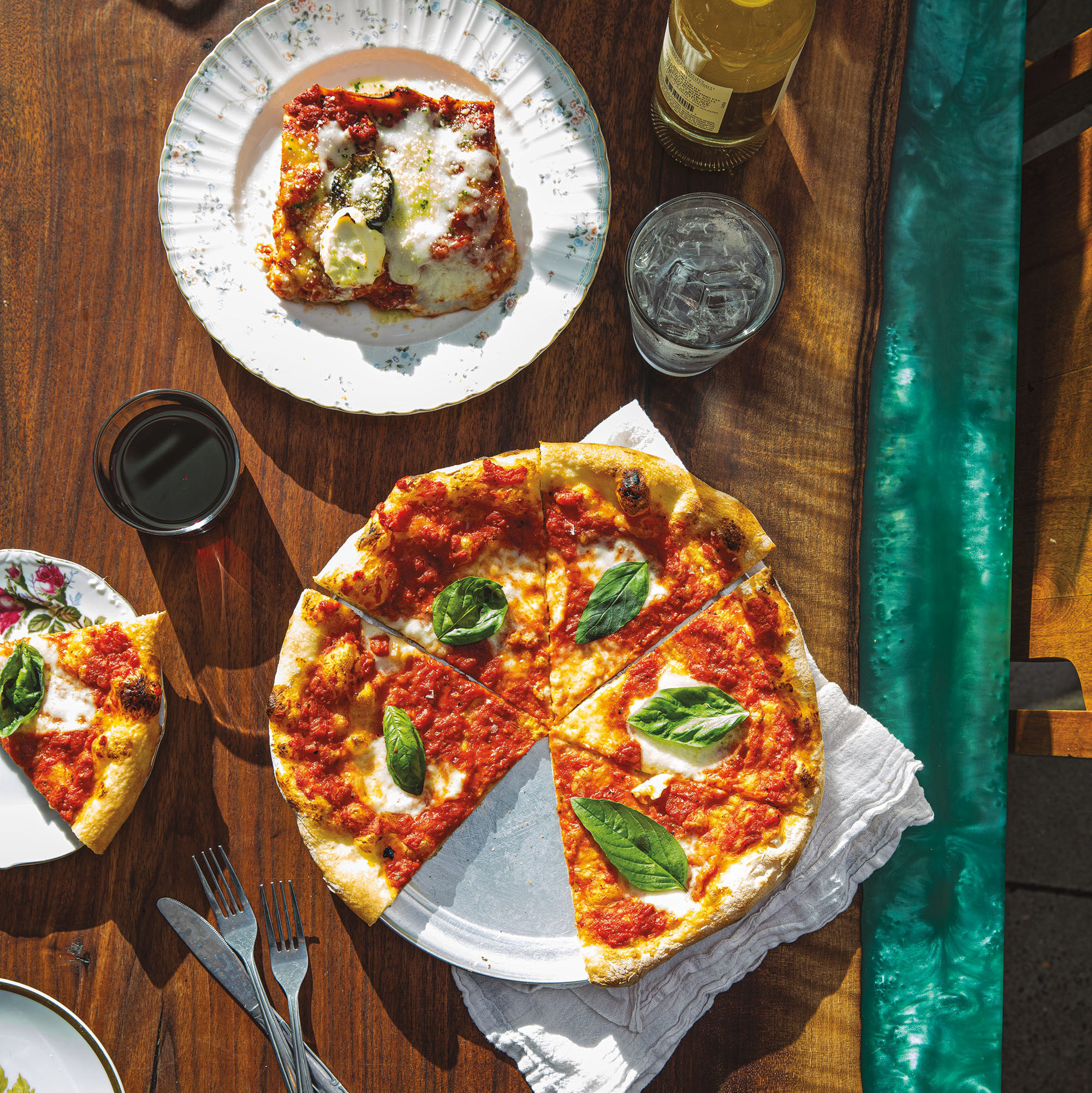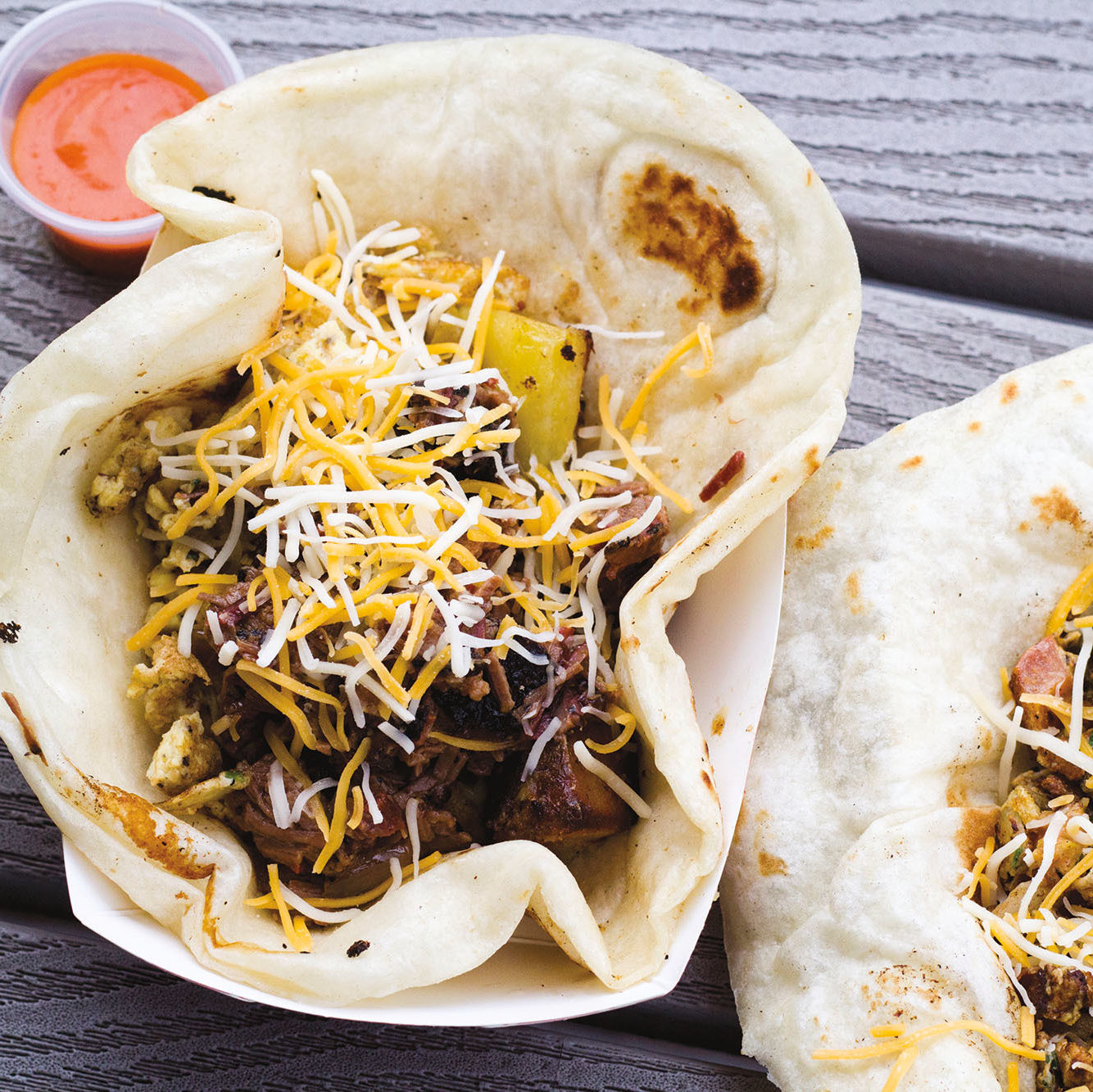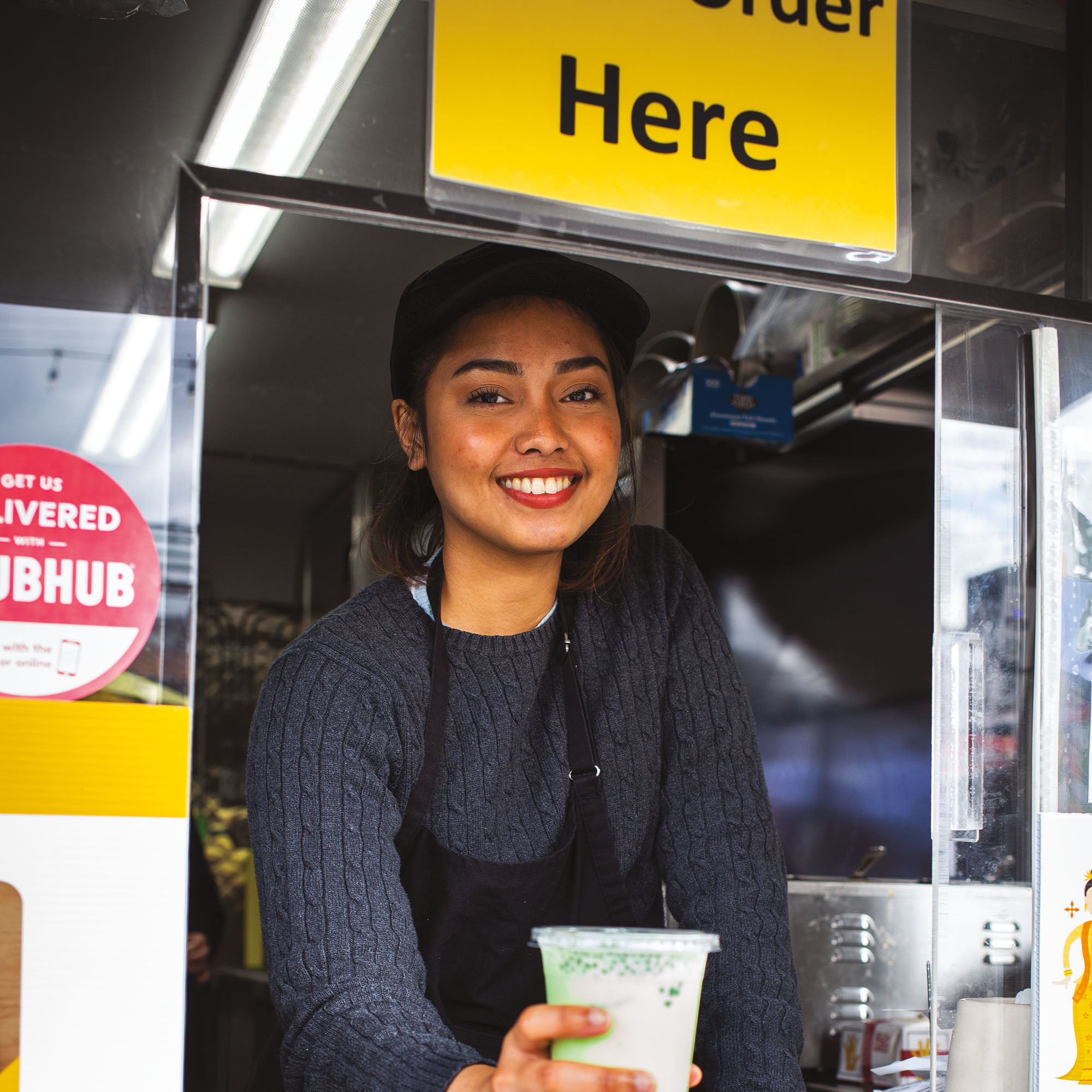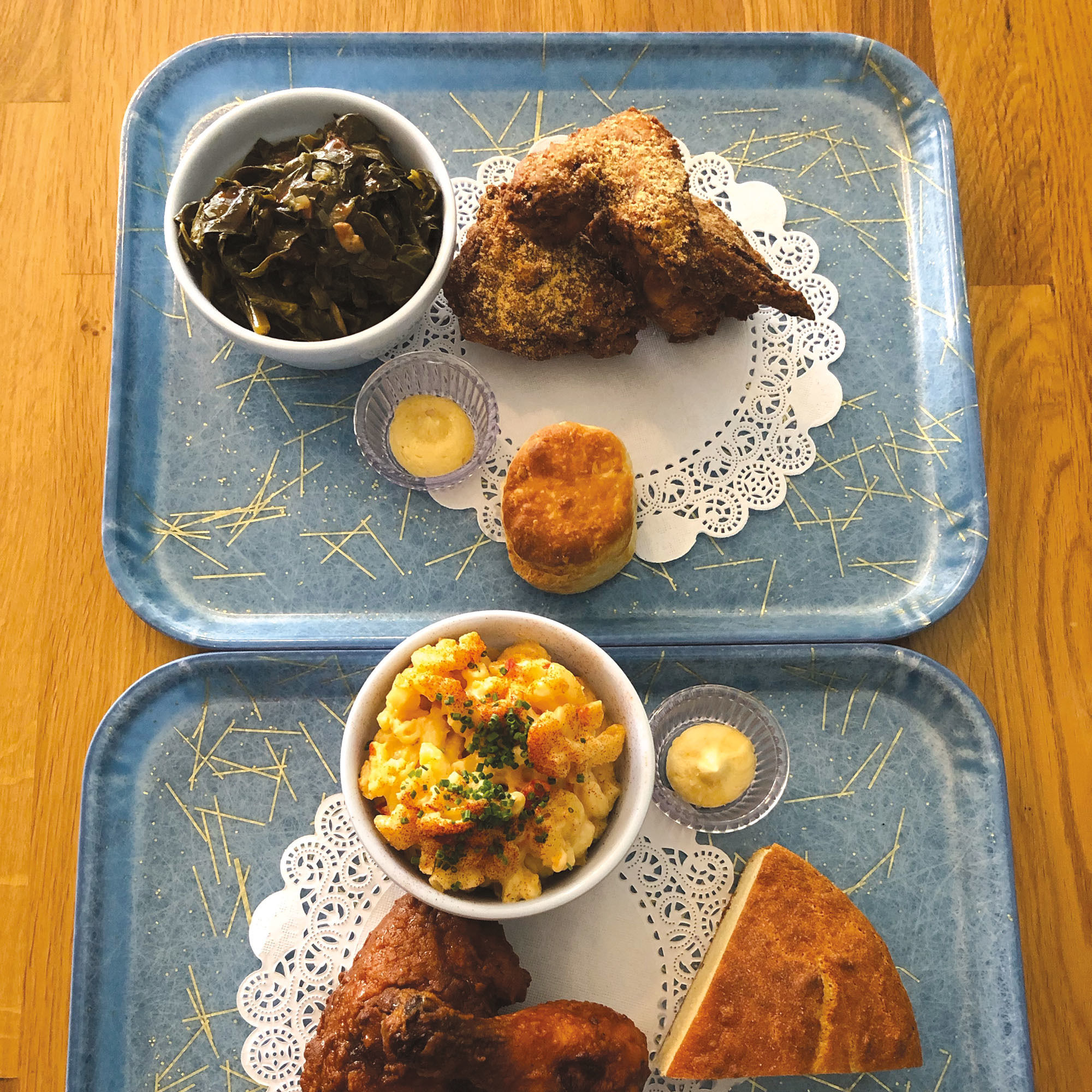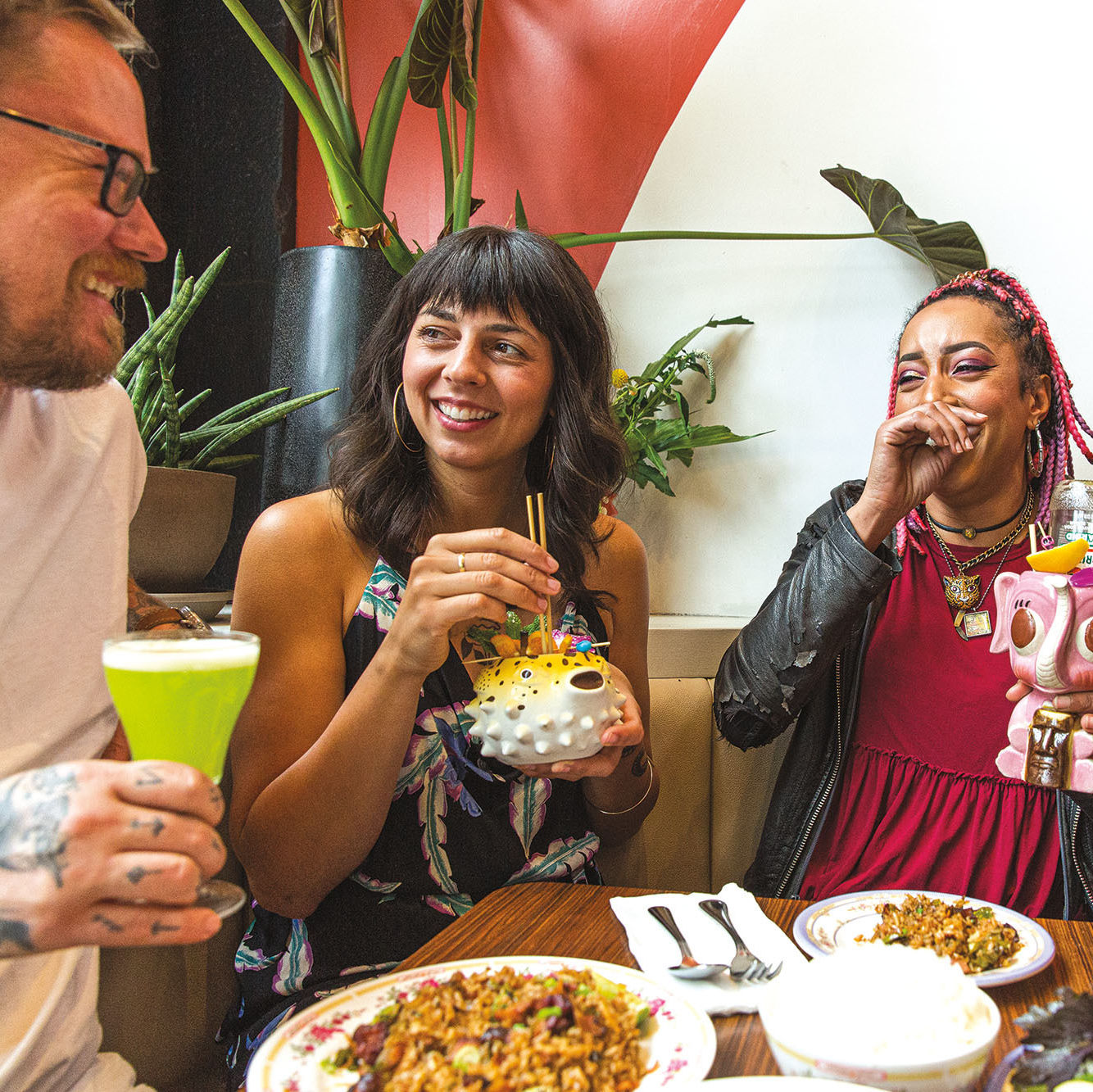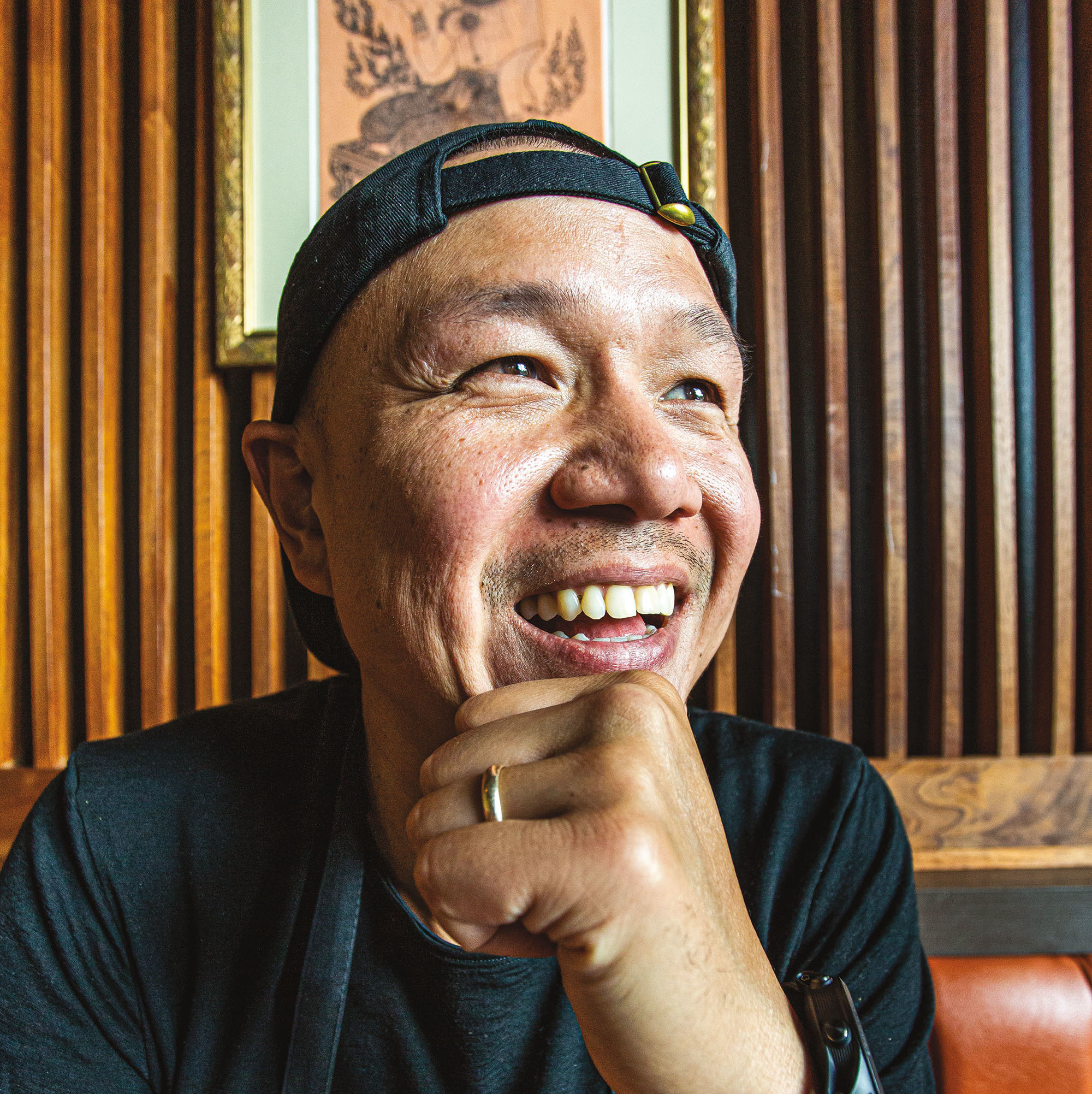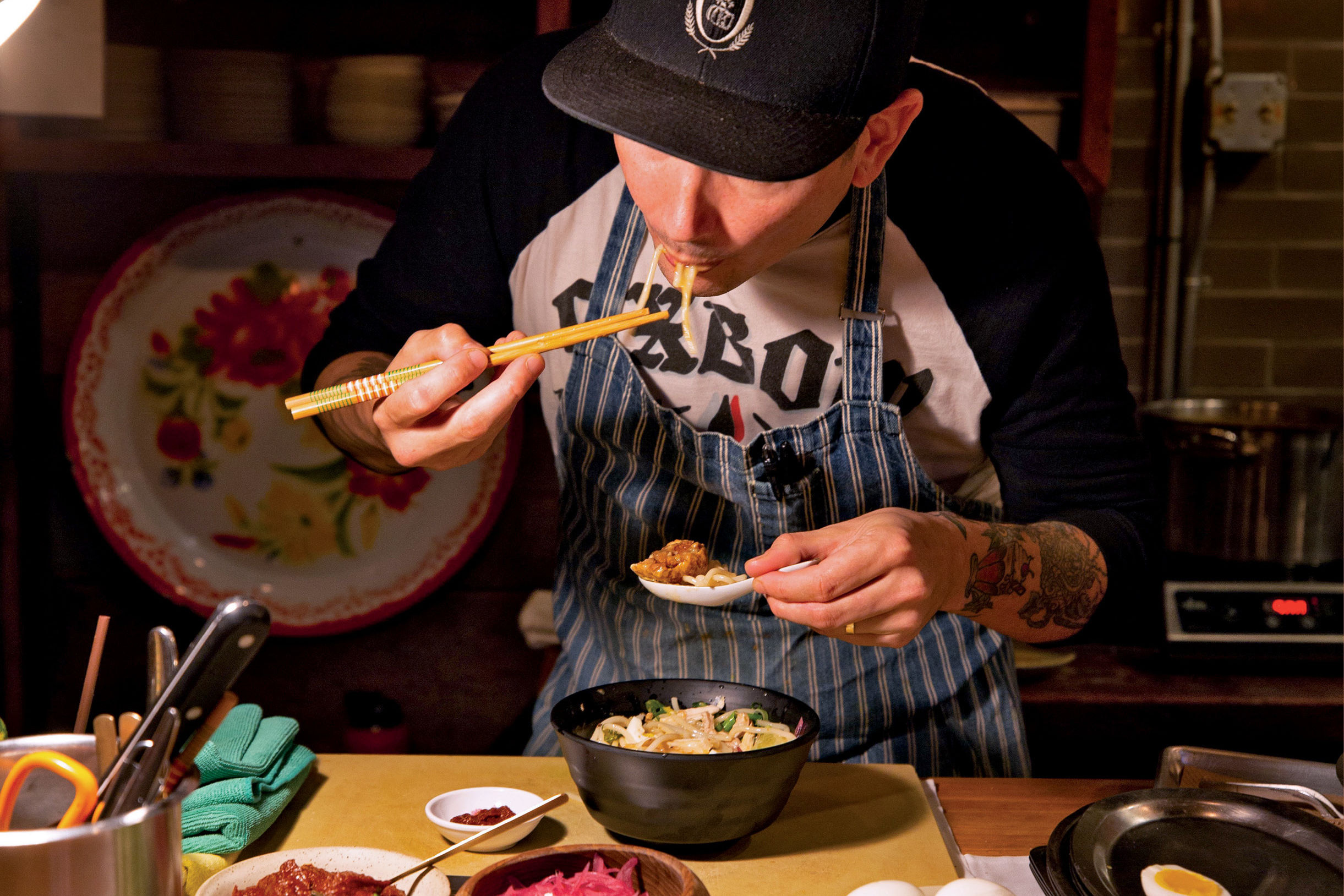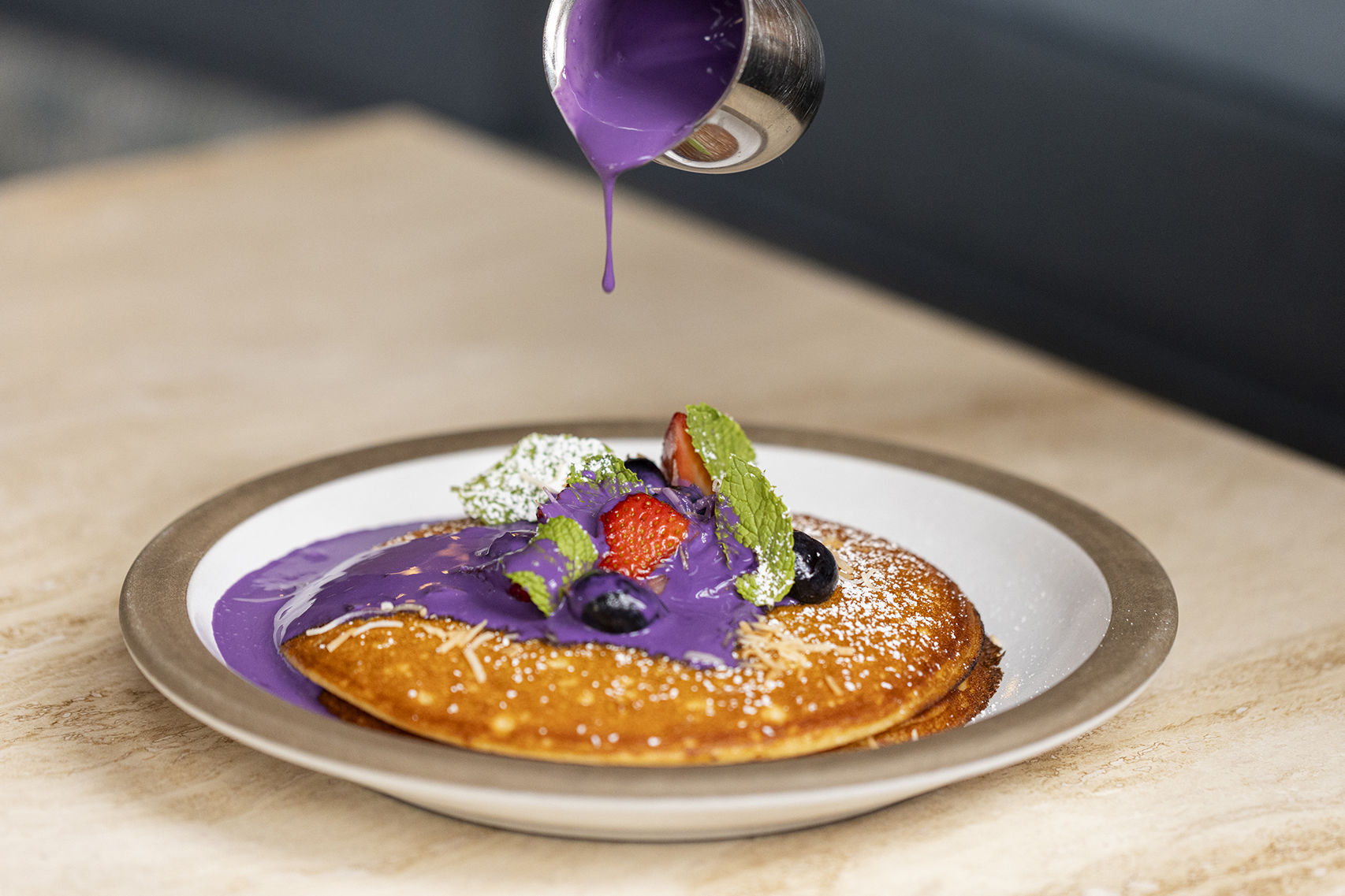Radical Thinking, Southeast Asian Rarities, and Heart Make Gado Gado Our Rising Star Restaurant 2019
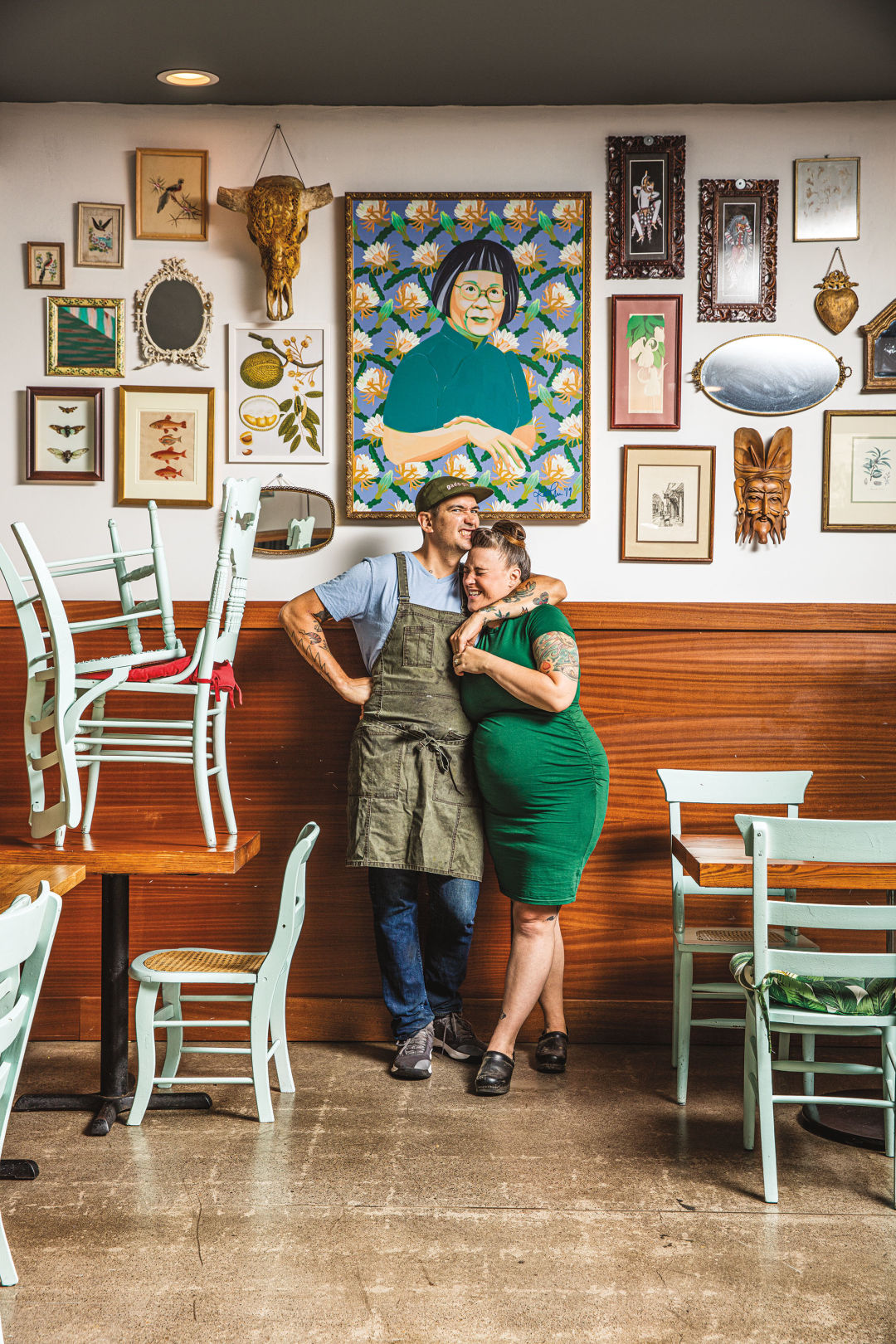
Gado Gado owners Thomas and Mariah Pisha-Duffly cuddle beneath a painting of their muse, Thomas’s Chinese grandma, “Tina,” who grew up in Indonesia.
Image: Stuart Mullenberg
Thomas Pisha-Duffly’s grandmother Tina, now 92, grew up on babi kecap (just say “Bobby Ketchup”) in Indonesia. It was a simple dish made by braising pork belly in rice wine and soy sauce. By the time Thomas started eating it as a kid, the dish had changed: Tina, by then a longtime Californian, cooked with what she could find—subbing macadamia nuts for camel nuts, or bullion for MSG. Some 30 years later, babi kecap is in rotation on the menu at Gado Gado, Pisha-Duffly’s new “Indonesian” restaurant in a Hollywood-neighborhood strip mall. This version takes its deep savor from smoked pork shank, dark and sweet soy, and a salty-funky shrimp sambal. It’s stupidly good ... and, the chef admits, nothing his grandma would recognize at first bite.
That’s the way most of Pisha-Duffly’s food materializes: a long, intergenerational game of telephone pulled from childhood memories, old recipes translated from his family’s Indonesian cultural subset, Peranakan-Chinese, and his own twisted mind, shaped with Italian techniques and a love of Americana. It makes for the most exciting eating in the city right now. We called Gado Gado the one to watch this past spring, as Pisha-Duffly fueled food chatter with pop-ups around town. The debut of Gado Gado’s brick-and-mortar in June unleashed a dinner menu unlike anything else—packed with unremittingly playful dishes and bold potential, an intro to another sector of Southeast Asia’s melting pot of flavors and ingredients, crafted in a deeply personal way. Add to that a riotous weekend brunch that jumps from Dungeness crab omelet noodle soup (in an actual crab-shaped pot) to Cap’n Crunch–covered pandan waffle puffs, and this restaurant is our Rising Star of the year.
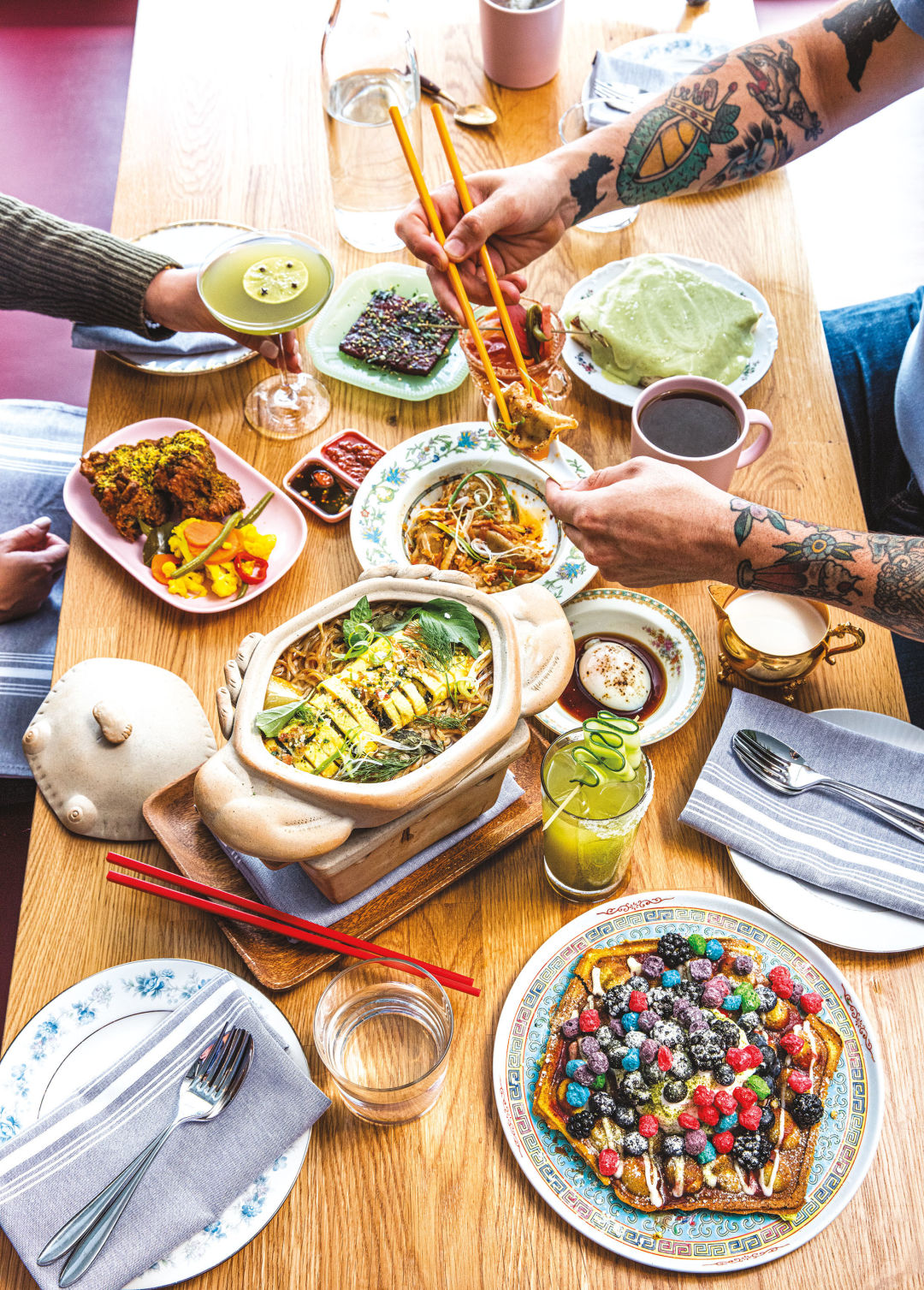
Gado Gado’s creative weekend brunch, Cap‘n Crunch–topped pandan waffle puff to crab omelet noodle soup to pandan-custard-slathered kaya toast
Image: Stuart Mullenberg
Around 2012, Pisha-Duffly hit his quarter-life crisis hard, burning out after a breakneck run in some of New England’s busiest kitchens. With his wife (and Gado Gado’s GM), Mariah, he spent a month detoxing in his ancestral Indonesia. “It blew the doors open,” he recalls. When they returned, Thomas reconnected with his grandmother, a wellspring of Proustian food memories, and opened Honey Paw, a New York Times–blessed “nondenominational noodle bar,” in Portland, Maine, before moving to the other Portland (Oregon)—and grabbing attention for family-recipe-inspired pop-ups.
Now, in a converted Vietnamese restaurant with bright, tropical wallpaper and poor sound dampening, the pair are cooking up some of the city’s most tongue-twisting plates. Pork and blood sausage corn dogs over “hoisinaise” and grilled breakfast roti oozing Oaxacan and American cheeses elicit squeals for their bicultural food-play. But the range extends to more traditional beef rendang, a coconut-braised pulled short rib dish with enough umami to launch a lunar lander into orbit.
Menus change with whiplash frequency at Gado Gado, evolving like a viral strain over the course of weeks or even days—a holdover from the restaurant’s years as a pop-up. A version of cheung fun, a chewy, taffy-like rolled noodle typically found at dim sum restaurants, first arrived in a rich, tomato-salted mango coconut curry beneath a shower of rice puffs, basil, and dried shrimp. The following week it transformed into a tropical curry, popping with jackfruit and lychee-like longan. Most recently, those wonderful cheung fun were a mere garnish, playing backup in a dish of blood sausage, shishito pepper, and okra.
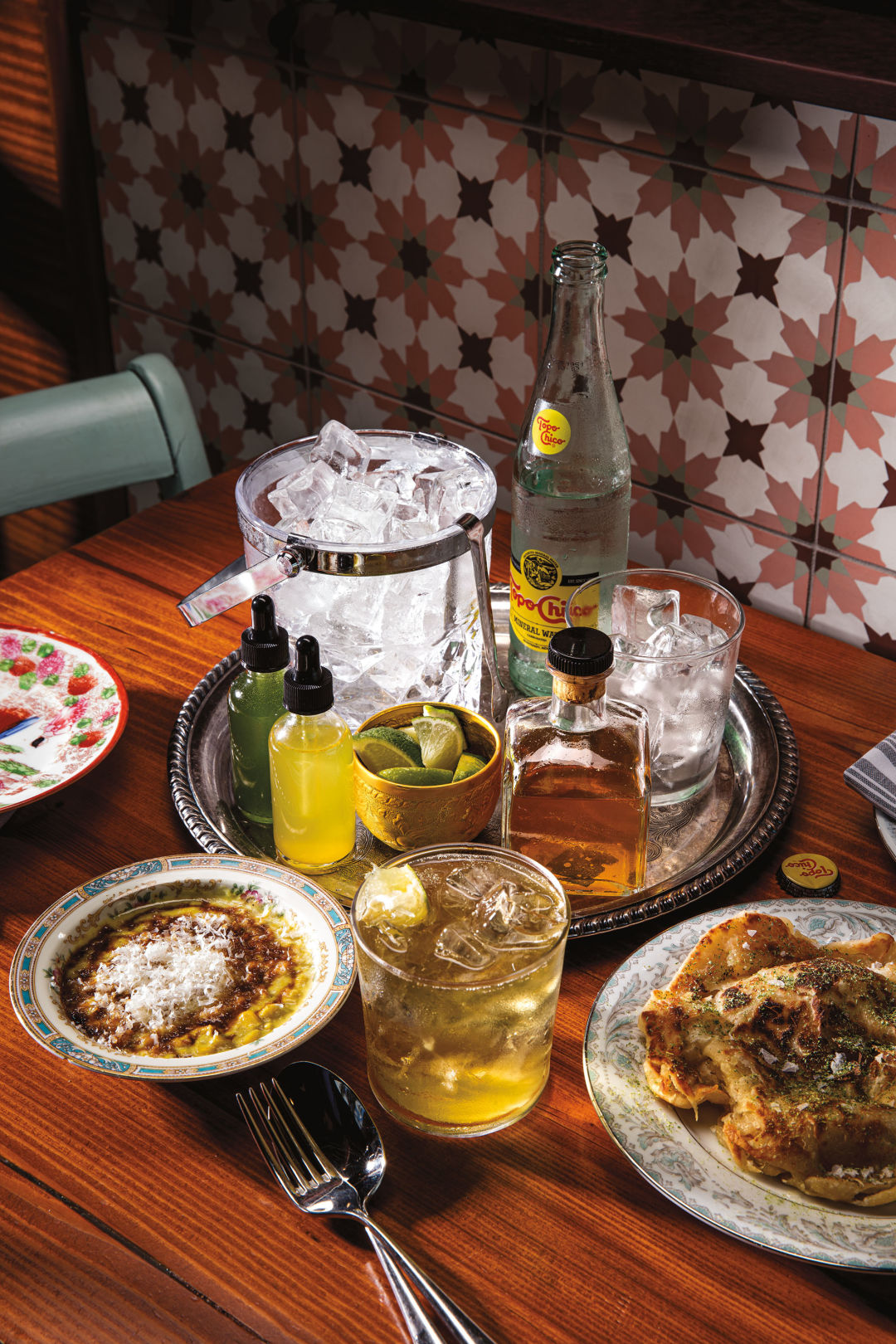
Gado Gado’s “Make Your Own Highball" tray may include turmeric whiskey, fresh limes, and tincture bottles of turmeric pickle liquid and pandan syrup
Image: Stuart Mullenberg
Gado Gado summons a hodgepodge of Southeast Asian traditions and ingredients, as much Thai, Malaysian, and Singaporean as Chinese-Indonesian. Take the brunch-only kaya toast, Singapore’s ubiquitous breakfast, typically spread with store-bought pandan “jelly” and dipped into a slurry of nearly raw egg yolk and soy sauce. Pisha-Duffly makes his jelly from scratch—a green-hued whipped custard spread over palm sugar bread. For dipping: a soft-cooked egg with soy sauce, plus a glug of maple syrup to nab the American breakfast palate. Cut the toast into logs, dip into the soy, and feel your salty-sweet boundaries pushed, incredibly, to their limits. This is the anti-avocado toast we’ve been waiting for.
The downsides to Pisha-Duffly’s ping-ponging approach: diners often can’t find favorites on return visits, and line cooks don’t always have the time to master techniques before moving on to the next Day-Glo pandan experiment. To cook this way, truly by the seat of your pants, requires chutzpah and skill, which Pisha-Duffly, for the most part, delivers in full. “More often than not, it creates an environment of newness—the flavor and food we want. It does cause you to fall on your face a few times,” admits Pisha-Duffly. “The Grateful Dead has a lot of really bad shows, but when they’re on, it’s really fucking transcendent.” 1801 NE César E. Chávez Blvd

